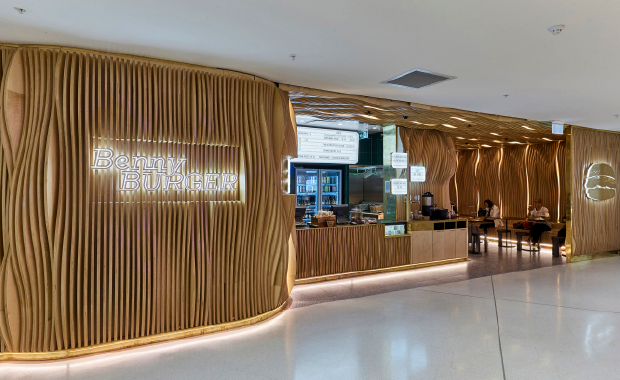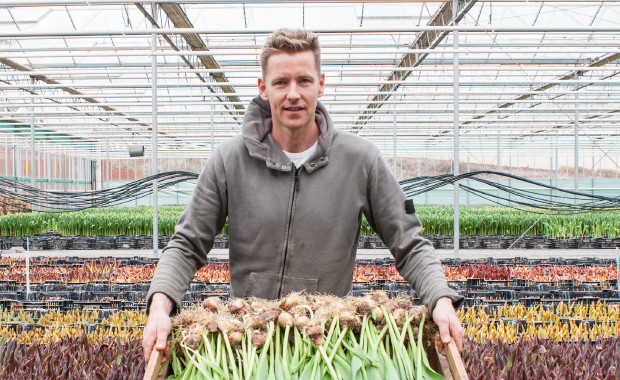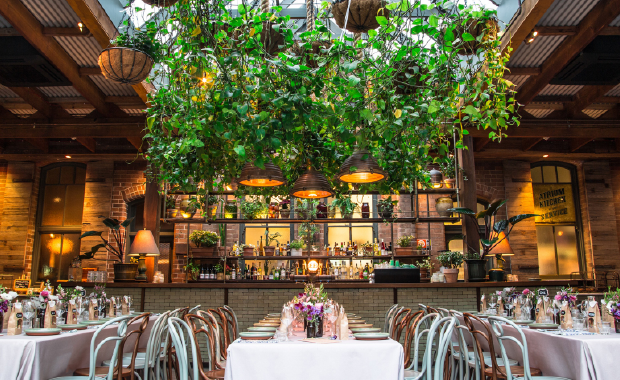What's on The Menu: Inside the Latest Food-Based Retailing Trends
How we enjoy food today is vastly different to the generation before us. Consumers want to connect with food, they want to know where the food comes from, to be part of a community and to feel a sense of exploration.
To keep up with changing consumer expectations, food and beverage operators need to maintain quality whilst increasing consumer engagement and today’s consumer is vastly more connected – with the unprecedented ability to share, criticise and promote – they expect both authenticity and innovation.
For many restaurateurs, food has become a method of personal storytelling and self-expression. Now more than ever, food is not just a product or service but an expanding experience – helped largely by technology and social media – which has completely revolutionised our relationship with food, both as producers and consumers.
The Urban Developer sat down with three innovators at the forefront of this rapidly-evolving industry: Eco-warrior and founder of By Joost, Joost Bakker; Founder of The Grounds of Alexandria, Ramzey Choker; and director of Australia’s largest food consultancy firm, Brain & Poulter, Suzee Brain.
These three informed “foodies” will be sharing a panel discussion at the upcoming Urbanity ’17 conference with UberEATS Queensland General Manager, Susan Anderson, breaking down the latest food-based retailing trends.
How foodie culture is changing food retailing

The shift in how food is consumed comes in large part from the size and demographic of the market consuming it. In 2017, millennials have the power to outspend the baby boomers.
According to Francis Loughran of Future Foods, nearly half of the money that millennials spend globally on food goes towards buying food in cafes and restaurants or ordering take-away; and when it comes to what they want to spend their money on, they are looking for something very specific when it comes to their food experiences.
Australian consumers are driven by both a sense of exploration and of missing out -- they are always on the hunt for new food experiences.
The average Australian eats out two to three times per week, an annual spend of $45 billion. There is a consumer push for quality over quantity, Australian’s are leaving fast-food behind as they seek out healthier options.
Food on the move

As the imminent arrival of Amazon threatens the Australian retail market, creating a shopping experience that cannot be replicated with purchases bought online is paramount.
And, according to Suzee Brain, everyone wants to get in on the food act. Food providers are rapidly diversifying their offerings to capitalise on a larger consumer market:
“We’re seeing traditional fresh food retailers like Harris Farm move food catering, high-end restaurateurs like Neil Perry and Simon Goh moving into fast food, and department stores like David Jones entering the food-retailer market.”
“Millennials are dining out up to twice as frequently as previous generations but still the majority of out of home dining occurs Friday and Saturday night. While shopping centres have captured around 40% of all retail spend, they have only captured around 20% of the food catering spend because many shopping centres have not had an offer that traded Friday/Saturday night. Hence the growth and activity in this sector.” Brain said.
Undoubtedly the biggest disruptors in this space have been UberEats and other food-delivery services who, according to Ramzey Choker, are feeding into the convenience customers crave.
“It’s already begun to have a considerable impact on the industry and it will be interesting to see how far it goes to shape the future of restaurants.” Choker said.
UberEats' Queensland general manager Susan Anderson said that didn’t appear to be an impact on in-room dining.
"It's the food industry going through e-commerce change. There's a different experience that some customers want […] we're seeing breakfast, we're seeing a lot of healthy food as one of the top searched for terms. People are busy so they use it as a way to feed their families.
Food, Health and Sustainability

There is a greater consumer emphasis on how foods are sourced and served. Bakker believes that sustainably-sourced foods with a focus on seasonality and locality are a key trend in today’s food culture.
“What menus offer and how they are put together is now guided by sustainability, when I opened the Greenhouse in 2008 most restaurants had very few vegetarian options or even considered it. Very different today!” Bakker said.
These sentiments are shared by Choker who is behind the hugely popular Grounds of Alexandria, which in 2015 was Australia’s sixth most-instagrammed location.
“[At] The Grounds, the shift in our food focus towards transparent menus and healthy dishes is catering to the needs of a large portion of customers who are altering their dining habits. It’s also about making our food look more beautiful as social media continues to drive the way consumers share content and experiences.” Choker said.
According to Bakker, not everyone is putting their money where their mouths are like The Grounds and despite a big push on social media for more sustainable alternatives, sadly a disconnect still exists where there is a lot of talk with little action.
The dining experience: Creating customer loyalty and meaningful hospitality

According to Choker, anyone who isn’t building beautiful venues or concentrating on looking after what their customers really want and need are going to be in serious trouble. The opportunity for this comes from landlords, giving vendors creative licence to create truly amazing spaces.
“The industry needs diversity and innovation, and sometimes that means pushing boundaries and breaking rules.” Choker said.
Choker prioritised “beauty” as one of the core pillars of strategy for The Grounds in order to achieve a meaningful outcome.
“It extends from the food through to the look and feel of the spaces. It’s not enough to merely build a venue with four walls and serve food and beverage, it needs to mean more than that.”
Whilst Choker has focused on dining experience at a more intimate level, Brain studies food precincts and what makes them successful.
“This includes having the right types of consumers in the trade area, the depth, proximity and composition of surrounding competition, the site attributes, other anchors to the precinct , placemaking strategy, climatic considerations, accessibility, safety, connectivity, scale, public space, serviceability, sightlines, circulation, aspect, views[...]it’s a long list!” Brain said.
Bakker adds to this that there are endless opportunities through the built environment and placemaking to create more sustainable options that are meaningful to the environment and patrons alike.
“Many new venues now open with crate, bottle or packaging return systems. I have no doubt that by 2040 most of our food will come from the buildings that we inhabit. This will free up the mined, dead farmed soils to be returned back to nature as wilderness. Put simply we don't need to use two thirds of the world's arable land to grow food!” Bakker said.
Proudly brought to life by The Urban Developer, in partnership with Queensland Government and Brisbane Development Association, Urbanity ’17 is a two-day conference held at Brisbane’s Royal International Convention Centre 28 – 29 September 2017.














